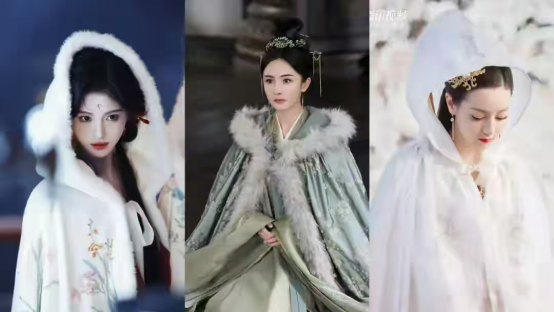This June, stepping into the show venue of “Silk Road Cloud Clothing South Expo Fashion Week”, the audience was infected by the strong ethnic culture. The stage design integrates the flowing lines of the Silk Road with elements of Yunnan’s ethnic cultures. The big screen dynamically displays traditional patterns such as Yi embroidery and Dai brocade. Combined with changes in lighting and music, it creates an immersive experience with a strong sense of historical thickness and modern technology.

The History of Yi Embroidery
The fashionable interpretation of ethnic costumes has become the biggest highlight. The flame patterns of Chuxiong Yi embroidery jump on silk fabrics. Yi embroidery is showing itself on the world’s fashion stage with a new look.
Yi embroidery has a long history of thousands of years. For example, Chuxiong Yi embroidery has a inheritance history of more than 1,700 years. Yi women are the main inheritors of Yi embroidery. They learn embroidery from elders since childhood. “First learn to cut, then learn to tailor, and finally learn to embroider and sew cloth shoes”. Almost anyone who can hold a needle can embroider. The craftsmanship of Yi embroidery is passed down from generation to generation by Yi women.

Yi embroidery coiling stitch
Yi embroidery has more than 70 kinds of stitches, and 36 are commonly used, such as flat stitch, insertion stitch, and mixing stitch. Compared with China’s “Four Famous Embroideries” – Su embroidery, Yue embroidery, Xiang embroidery and Shu embroidery, Yi embroidery uses red, yellow and black as the three primary colors. Its colors are bright and the contrast is strong. At the same time, the pattern structure of Yi embroidery is rigorous. The contents are mostly taken from Yi people’s life scenes, natural scenery and myths. What’s more, the 13 direct branches of Yi embroidery have more than 40 styles and thousands of patterns. Different pattern combinations have different meanings. It may be related to the national personality. Living in the snow – covered plateau in southwest China, the bold and unrestrained style of Yi embroidery forms a strong contrast with the delicate style of the “Four Famous Embroideries”. It reflects the Yi people’s totem worship, folk customs and other characteristics.

The Expression of Yi Ethnic Embroidery
At the South Expo Fashion Week, Yi embroidery showed a sense of integration between traditional thickness and modern flexibility. On the stage, there were 20 series of works with the theme of “Flowers Blossom All the Way”. There were not only long gowns of the Nasu branch of Yi embroidery, with red and black as the background and sun, moon and stars as patterns, but also fashionable dresses of the Shansu branch, composed of blue plain embroidery and simple buttons. During the clothing display, Yi embroidery boldly combined ancient techniques with modern aesthetic language. Traditional stitches, together with modern wide sleeves and waist – tightening designs, created one new Yi embroidery costume after another. On the stage, Yi embroidery mainly used sun patterns, fire sickle patterns, fern patterns, sheep horn patterns, animal tooth patterns and triangular patterns for knitting combinations. The color matching followed the design principle of taking black and blue as the base and using colored threads as embroidery strokes. Each embroidery pattern went through three techniques: cross – stitching, appliqué and coiling.

At this fashion week, Yi embroidery used bulky yarn colored threads to outline the main patterns, mercerized embroidery threads to fill in details, and gold threads to outline the contours. In addition, the unique technique of double needles moving synchronously on the front and back gave Yi embroidery a different relief texture and three – dimensional effect, making all kinds of patterns and patterns vivid.

A needle and a thread connect the past and the present. A piece of cloth communicates China with foreign countries. The vitality and expressiveness of Yi embroidery are constantly strengthening. Yi embroidery needs to go out, so that everyone can appreciate its beauty and experience the different aesthetic experience it brings.







